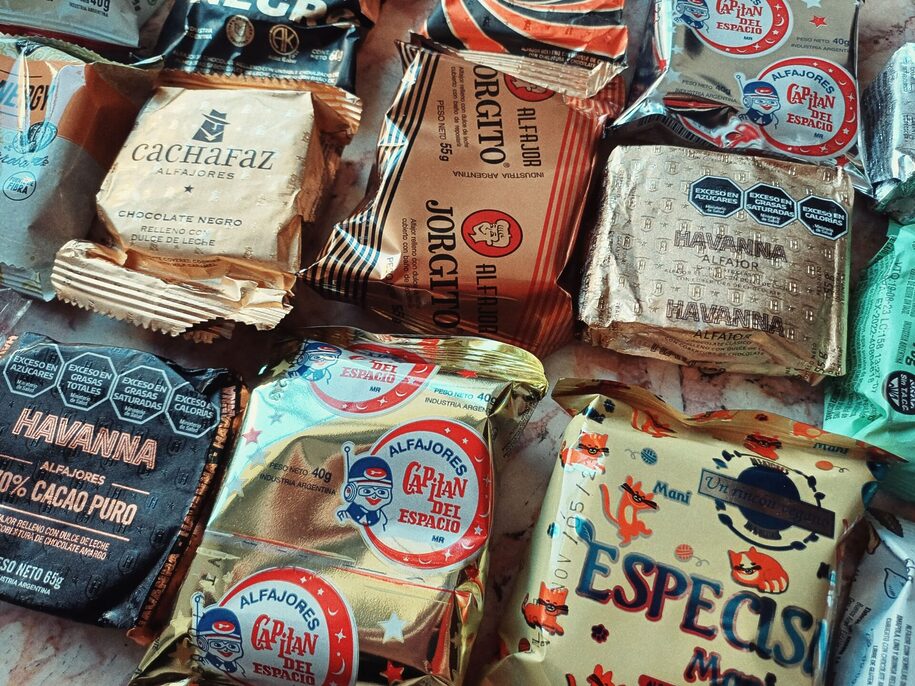What are alfajores?
Alfajores are a typical Argentine confection made with two plain cookies with dulce de leche in between. They are sweet cookie sandwiches typically enjoyed as an afternoon treat or as dessert.
Of course, other fillings than dulce de leche can be used to make alfajores, and by changing the kind of cookie used and the coating, you get an entirely different alfajor experience.
The different types of alfajores (Argentinian cookies)
We know visitors love our alfajores, but many don’t know there’s a world of alfajores out there besides Havanna’s (no shade – Havanna is great!). That’s why we put together a “beginner’s guide to alfajores” of sorts, to help newcomers discover the delicious world of alfajores. Beware: after reading this article, you’ll probably be craving an alfajor…
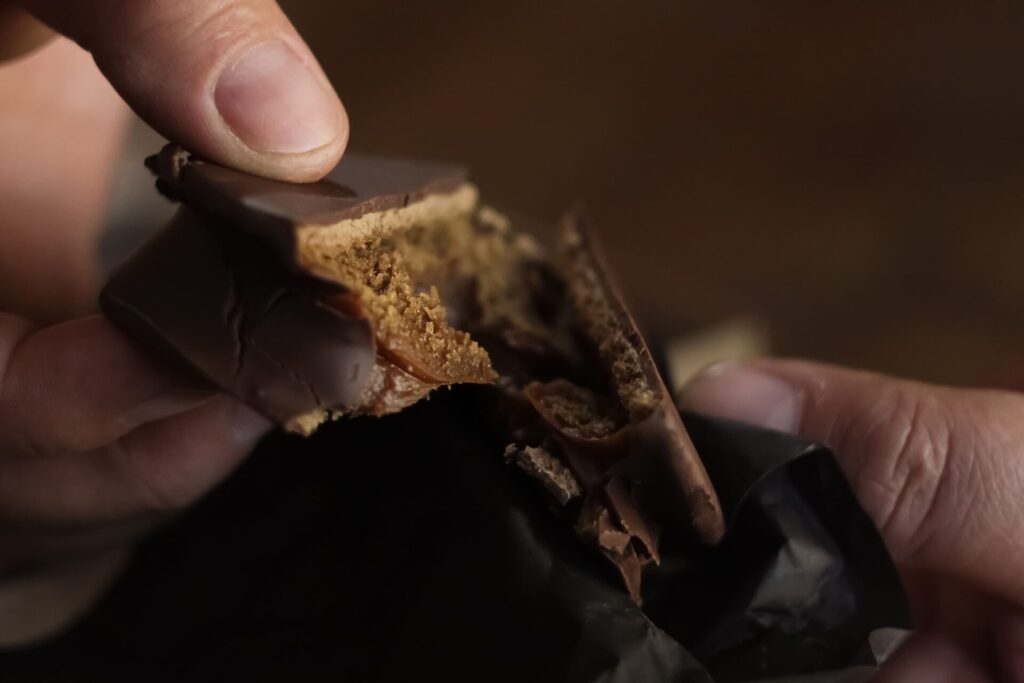
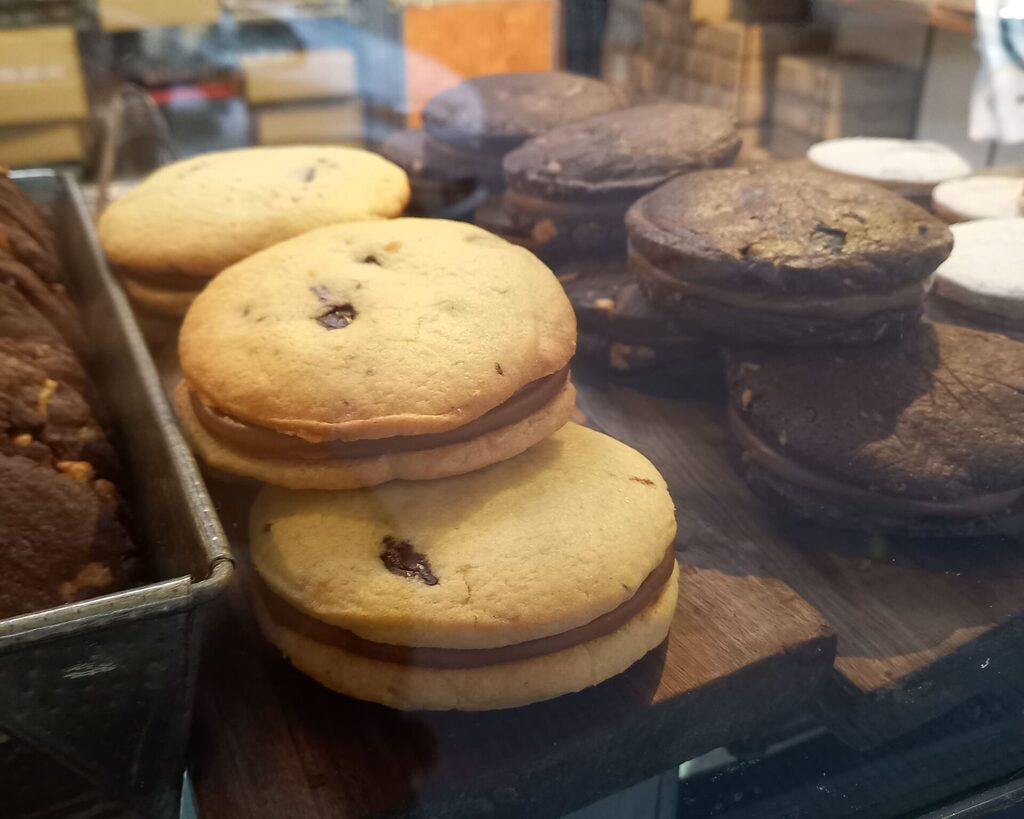
Alfajores de maicena
Alfajores de maicena are made with cornstarch (that’s the meaning of maicena), and most are produced artisanally, as the soft, crumbling cookie is not usually easy to transport.
You can find alfajores de maicena in cafés and bakeries, in varying sizes (we’ve seen literal alfajor de maicena cakes out there). We always tell people to order an alfajor de maicena together with a good cup of coffee, as the texture can feel very dry because of the cornstarch.
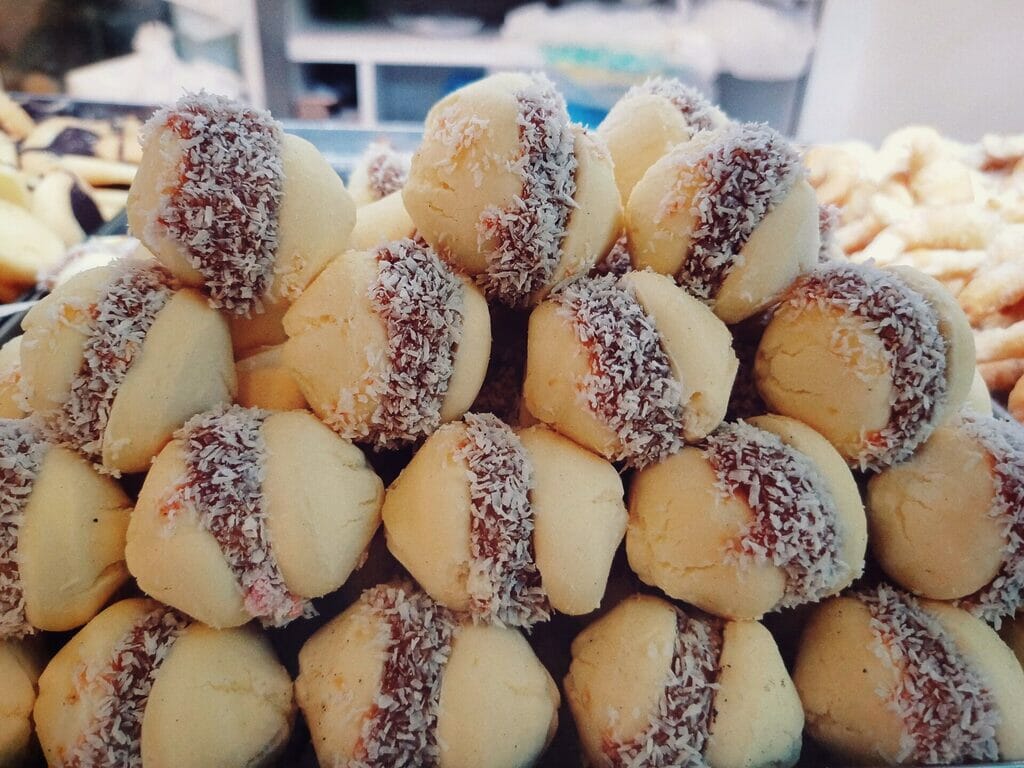
Traditional alfajores
Unlike alfajores de maicena, most alfajores are made with regular wheat flour. Traditional alfajores can be split into two groups: chocolate alfajores and sugar glaze alfajores. The alfajor itself is basically the same – what changes is the coating.
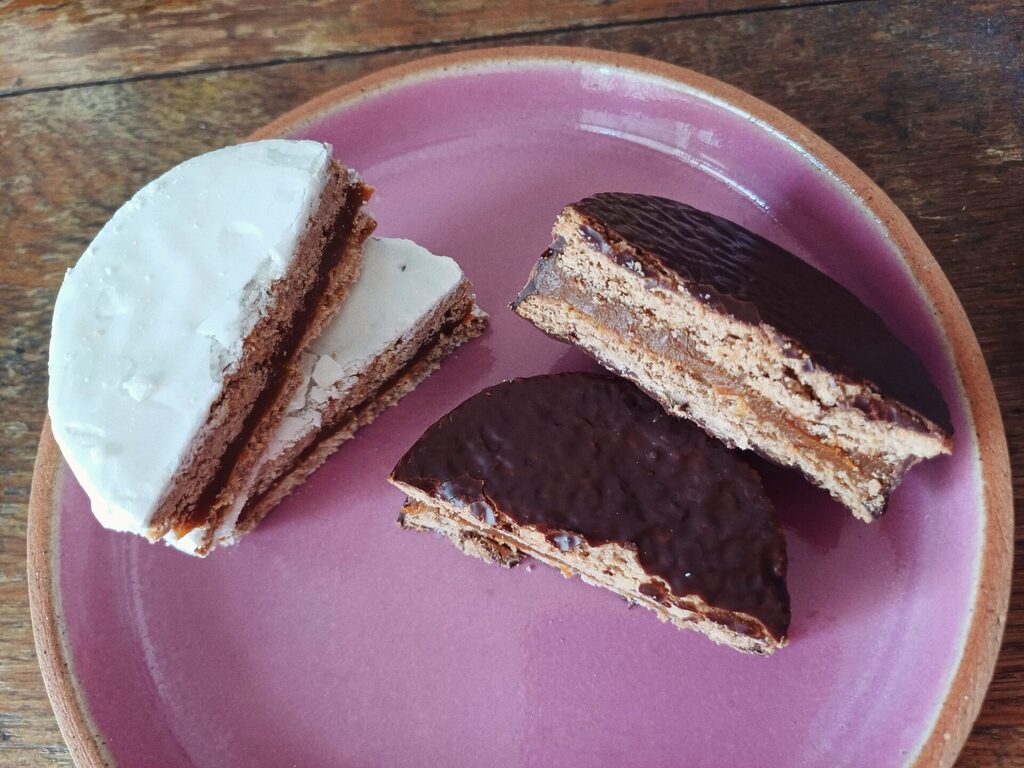
Alfajores de fruta
Besides dulce de leche filling, many typical alfajores featured a jam or jelly filling. The most traditional ones feature a quince paste filling (membrillo), but we’ve seen many strawberry and berry jam-filled alfajores in the city lately, like the ones of trendsetting chocolatier Rapanui.
Where to buy alfajores in Buenos Aires?
You can buy alfajores pretty much anywhere: bakeries, cafés, supermarkets, kiosks and dedicated alfajor stores such as Havanna’s and Cachafaz. However, which alfajor to buy depends on what you are looking for.
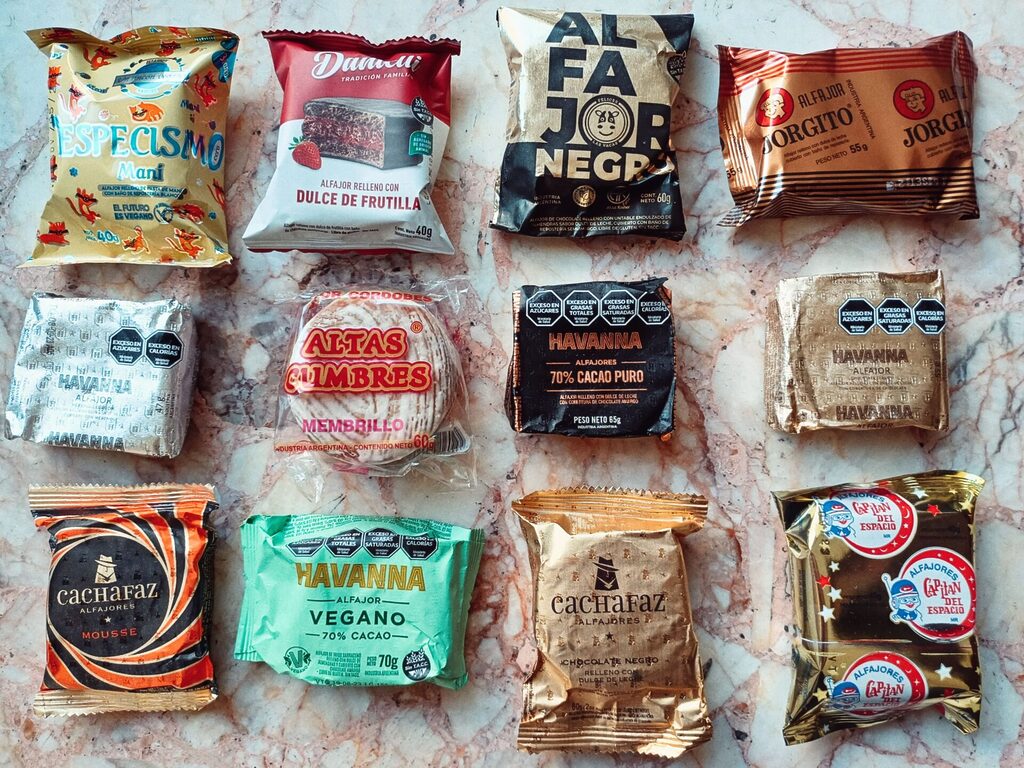
Our pick of the best alfajor brands out there
Alfajores Havanna
Havanna’s 70% cocoa chocolate alfajores are a must-try if you are visiting Buenos Aires. You are bound to bump into an Havanna sooner or later, so don’t miss your chance to try it. Unlike Havanna’s classic chocolate alfajores, the 70% cocoa ones are made with a dark chocolate coating. While they are not as sweet, they are exceedingly decadent (this is not sponsored, by the way, we are honestly just fans of the product).
Cachafaz
Some argue that Cachafaz has a better alfajor than Havanna. And while Cachafaz may not have the same reach, they definitely can take on their rival with their signature chocolate alfajor. Cachafaz has a few stores strategically placed throughout the city, usually close to tourist hotspots. They can also be bought at some kiosks and supermarkets.
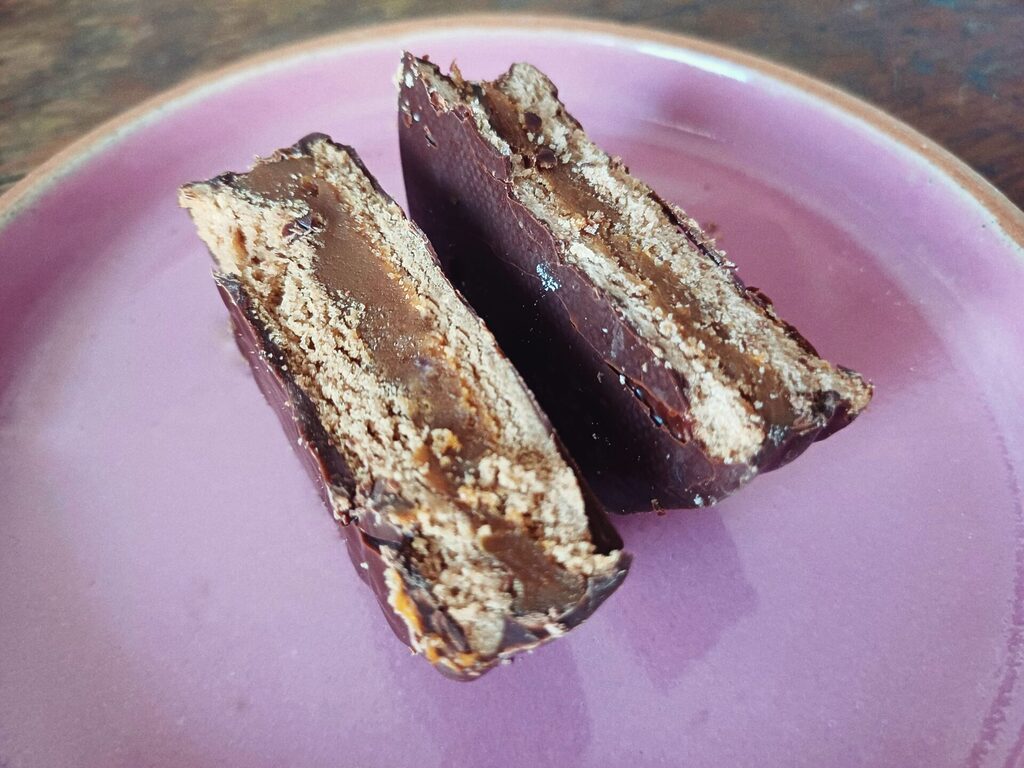
Jorgito
Less fancy than Havanna and Cachafaz, Jorgito alfajores are an affordable and sweet treat when the afternoon cravings start. This brand has been going strong since the 1960s, and many remember it fondly from their childhood. Buy them by the unit at a kiosk or venture to your closest supermarket to buy a 6 pack. They also have a “mini” alfajor pack that is perfect for dessert.
Capitán del Espacio
Capitán del Espacio (“Space Captain”) is a beloved alfajor brand with an almost cult-like following. The taste is very similar to Jorgito, but the brand’s atypical marketing (or lack thereof) has been at the center of its success. The alfajores are produced in the nearby Quilmes city, and in very limited quantities.
Finding this alfajor in Buenos Aires used to be such a novelty that people would spread the word if they found a kiosk selling the elusive Capitán. Nowadays they are much easier to locate, but porteños still feel a rush of excitement when they manage to get hold of one.
Gourmet alfajores
La Olla de Cobre
You are not gonna find this tip anywhere else, but La Olla de Cobre (The Copper Pot) makes the best alfajor in the entire country. They are not easy to find but are worth the treasure hunt.
The artisanal chocolatier is located in the San Antonio de Areco town, which is 120km away from Buenos Aires, and worth a visit to get an idea of what gaucho life used to be like.
In Buenos Aires, the store Sabores Increíbles (Ayacucho 1158) usually has some in stock.
Rústico Chocolate
Granted, not everyone can travel to Areco, and maybe you don’t want to go to all this trouble for an alfajor. But if you are in the mood for sweet treat on the gourmet spectrum, head to Rústico Chocolate in Palermo (Godoy Cruz 1823). They have a fantastic selection of artisanal alfajores with a few twists. Grab a coffee while you are at it!
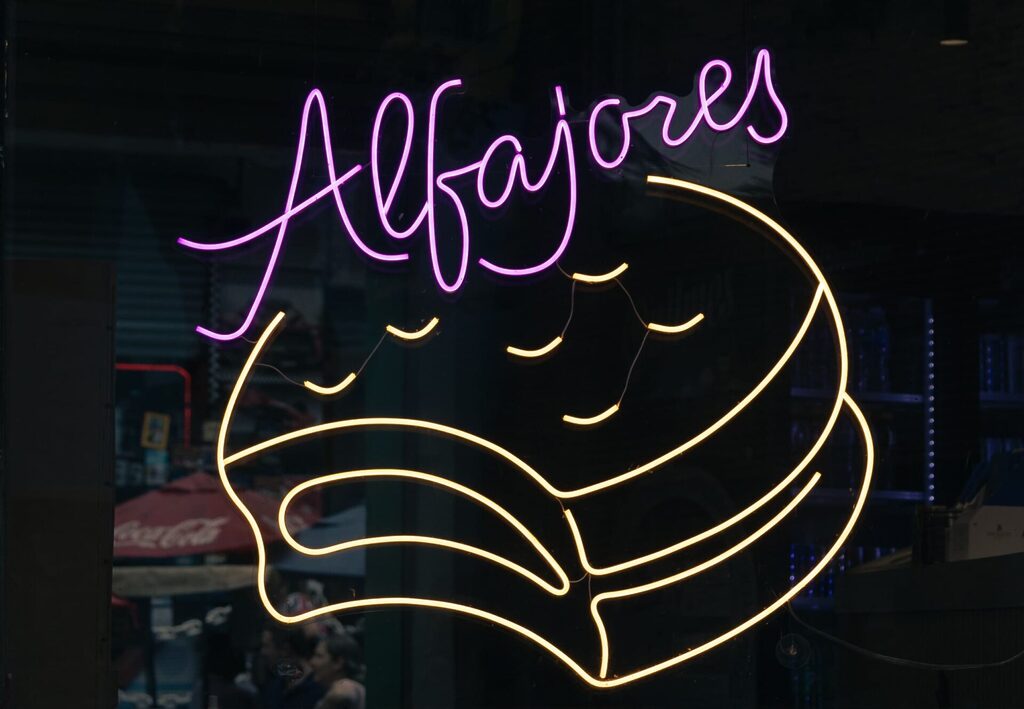
Regional alfajores: don’t miss out on these treats
If you are traveling the country and venturing beyond Buenos Aires, don’t miss your chance to try some regional alfajores. Some provinces have put their own spin on the alfajor.
Alfajor Santefecino
The province of Santa Fe (which is the birthplace of iconic Argentinian desserts such as Rogel or Chocotorta) is famous for its alfajores santafecinos, which are made with three layers of puff pastry, dulce de leche filling and a sugar glaze.
Alfajor Cordobés
The province of Córdoba is also famous for its jelly-filled alfajores. They feature a soft alfajor cookie, a quince-jelly filling, and a sugar glaze.
Because many regional alfajores are artisanally produced, you sometimes come across very unusual creations (such as fernet-infused alfajores). Other provinces also sell “their” own alfajores, but Cordoba’s and Santa Fe’s are the well-known ones.
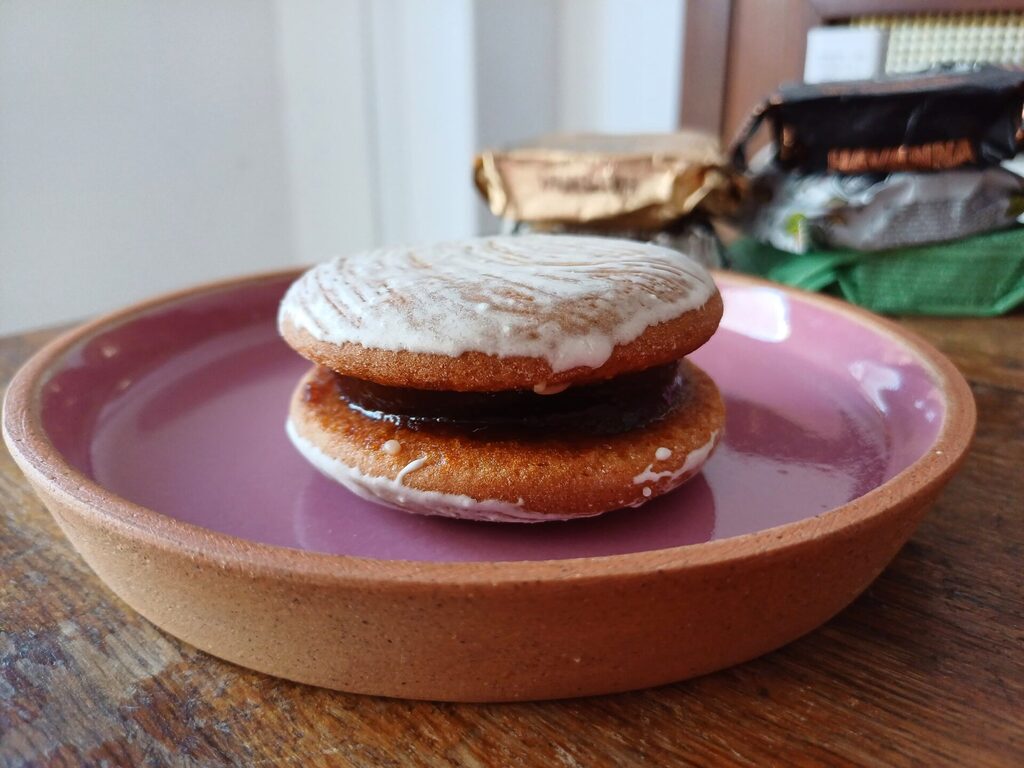
Alfajor marplatense
Technically not a regional alfajor, but we can’t talk about alfajores in such detail and not mention the huge role that the coastal city of Mar del Plata plays in the alfajor industry. Mar del Plata is where Havanna got its start, and the city – a historical vacation spot for porteños – has a fierce alfajor market (and also the best medialunas in the entire country, but that’s a conversation for another day). An alfajor that makes it in Mar del Plata can make it anywhere.
Alfajor trivia and FAQs
Which are some good gluten-free alfajores?
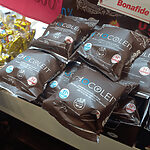
There’s the widely available Chocoarroz (the cookie is replaced with puffed rice), and other gluten-free certified brands such as Chocoleit, Celienergy, Coprigio, Dantelli and Cerro Azul. Havanna’s Semilia and Vegano are gluten-free as well. Gluten-free alfajores are marked with the “Sin TACC” crossed-out wheat spike logo, which certifies that a product is 100% gluten-free.
Where can I find gluten-free alfajores in Buenos Aires?
You can buy Chocoarroz at any kiosk or supermarket. The other brands are a little harder to come by – try Bonafide or any “dietética” (health food store). You can buy Havanna’s gluten-free alfajores at their stores.
Which brands have vegan alfajores?
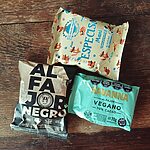
Havanna’s Vegano is vegan and gluten-free (beware, the Semilia is not vegan). Cerro Azul, Rincón Vegano and Felices las Vacas are also vegan. Coprigio has a vegan option as well.
Where can I buy vegan alfajores in Buenos Aires?
You can buy Havanna’s Vegano at their stores (by the unit or in bulk). Cerro Azul and Rincón Vegano and Felices Las Vacas are usually found at health-food stores or sometimes in kiosks. Rústico Chocolate has an artisanal vegan alfajor with peanut butter and strawberry filling.
Is the alfajor from Argentina?
Alfajores were brought to South America by the Spanish during the 16th century, but they (probably) originated in the Middle East centuries before that. We do know that alfajores were introduced to Spain sometime during the 8th century, when the Iberian peninsula was under Moor occupation. Argentina took the alfajores and added its own take, which was, of course, the dulce de leche – and so it was that alfajores became “Argentinian cookies”.
What is the difference between Peruvian and Argentinian alfajores?
Truth be told, they are pretty similar. Peruvians call dulce de leche “manjar blanco”, but the alfajor itself is pretty much the same. Of course, there are many alfajor variations within each country’s regions, but the basic product is the same.
What is the Mundial de Alfajores?
The “Mundial de Alfajores” or “Alfajor World Championship” is an alfajor fair and contest first held in 2022. Small businesses can compete to win the best alfajor award in different categories, and the public can sample alfajores from all over the country. The 2023 edition of the Mundial de Alfajores will be held in August in La Rural (Buenos Aires City).

